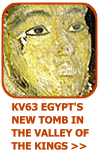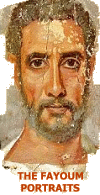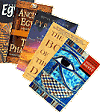|
|
|

[ Peasant Farmers ] [ Craftsmen ] [ Scribes ] [ Priests ] [ Return to Life in Ancient Egypt ]
Documenting history: the scribes
Along with the higher ranking priests and some of the educated dignitaries, the scribes were the intellectuals of Ancient Egypt. They occupied the upper rungs of the social ladder to the very top, and enjoyed due recognition accordingly.
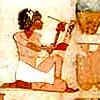 |
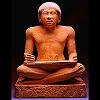 |
The scribes were well aware of their status and guarded their professional secrets jealously. They were the managers who gave orders, checked results, took records, granted or withheld permission. The ordinary Egyptian turned to them for all kinds of help, from drawing up a will or a marriage contract to simply reading and writing letters.
|
The occupation of a scribe was usually passed down from father to son. Few members of any other profession managed to penetrate the group. The scribes were meticulous record keepers noting down every possible transaction, including the following:
 |
Building supplies, |
 |
Tools and craftsmens requisites, |
 |
Work attendance, |
 |
Wages paid, |
 |
The number of bags of grain harvested, |
 |
The size of the herds, |
 |
Amunts of grain and materials issued from storage, |
 |
Types and quantities of objects manufactured, |
 |
Kinds and quantities of any seized goods, |
 |
Hands and phalluses cut from the bodies of fallen enemies, |
 |
Inventories of funerary gifts for the deceased, |
 |
Inventories of the daily offerings and sacrifices from the funerary priests in honour of the deceased. |
The precision with which quantities are calculated are impressive even today in our modern age. Scribes had to be good mathematicians, and calculations of labour and materials needed for major construction and building projects display a considerable degree of algebraic skill. Even the endless lists of all and sundry had their purpose. By giving senior officials an oversight of the country's total stocks it made possible their orderly distribution, the creation of reserves and planning for special projects.
Other documents from the scribe's pen include regulations issued by various bodies, court proceedings and records of private contracts dealing with sale and purchase, loans, hire, financial arrangements between spouses, inheritance, receipts, taxes, accounts and so forth.
The importance of the scribe
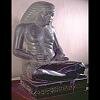 |
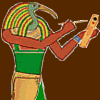 |
During battle, communication was by letter, therefore military leaders were first trained as scribes. Army scribes kept all records of recruits, stores, weapons and pay. Many scribes became officers and went on to join the general staff, where battle tactics were decided.
|
| Scribes were responsible for writing out the spells on the walls of tombs before they were carved and painted by the craftsmen. As the craftsmen usually couldn't read, it was essential that the head scribe checked over the work that had been done to make sure it was correct. |
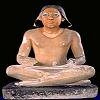 |
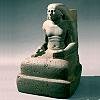 |
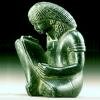 |
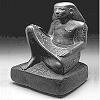 |
Scribes worked for the government, recording numerous statistics about food production, harvests and taxes etc for analysis and planning. Government officials were usually scribes who had worked their way up into higher government positions.
|
|
The priests who worked in the temples were also scribes. It was necessary to be able to read the instructions for the many religious rituals that they had to perform. These instructions could be written on papyrus scrolls or carved onto the temple walls.
|
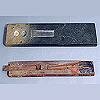 |
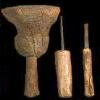 |
A seated scribe holding a papyrus roll was one of the most popular subjects in Ancient Egyptian art. Top ranking government officials would often chose to be depicted as a seated scribe. Scribes were highly valued and respected members of society, and as such were considered to be a manifestation of the god Thoth.
Discover life as a priest in Ancient Egypt >>
|
|
|






